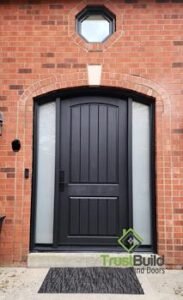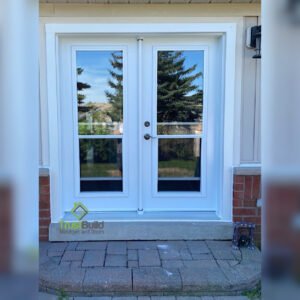
Laminated Glass
We’ll talk about tempered and laminated glass in this blog.
The process of creating laminated glass involves heating two sheets of glass and sandwiching a thin film (polyvinyl butyral) between them. This procedure resists extreme pressure and guards against fracture.
Noise reduction
Although a few factors affect the laminated glass unit’s ability to reduce noise, in general, this kind of glass is the best choice. As previously stated, the glass unit will consist of an inner glass spacer and sandwiched glass that is sealed. Put simply, this is a triple glass combination, with the third glass being interior and the first two serving as a sandwich with film in between.An insulated glass unit of this kind with three 4mm glass panes could reduce noise in the nose by about 27 dB. Moreover, shattered laminated glass will not break into tiny pieces but will instead fuse together to prevent further damage. This is the most advantageous choice for windows in hurricane-prone areas.
Applications: Any residential or commercial building where safety is a priority.
Tempered Glass

The process of making tempered glass involves rapidly cooling heated, untreated glass. The glass gains strength and durability from its instant toughening. When compared to other annealed glass, tempered glass has four times the strength. Because it is durable, it can have both round and rectangular shapes and be larger than ordinary glass. Additionally resistant to minor scratches and able to withstand high temperatures without breaking is tempered glass.
This glass has numerous residential applications in addition to its widespread use in commercial buildings. It is useful for creating large window panes for automobile windows, aquariums, and large commercial buildings. Moreover, it aids in the production of devices such as screen protectors for phones. It’s the ideal tool for creating countertops and tabletops. Options for Tempered and Laminated Glass are available to our clients at Trust Build Windows and Doors.
Tempered and Laminated Glass Overview
• Laminated glass is created by heating two glass sheets and sandwiching a thin film (polyvinyl butyral) between them.
• It resists extreme pressure and guards against fracture.
• Laminated glass units are generally the best choice for reducing noise.
• They consist of an inner glass spacer and sealed sandwiched glass.
• An insulated glass unit with three 4mm glass panes can reduce noise by about 27 dB.
• Shattered laminated glass fuse together to prevent further damage, making it ideal for hurricane-prone areas.
• Applications include residential or commercial buildings.





